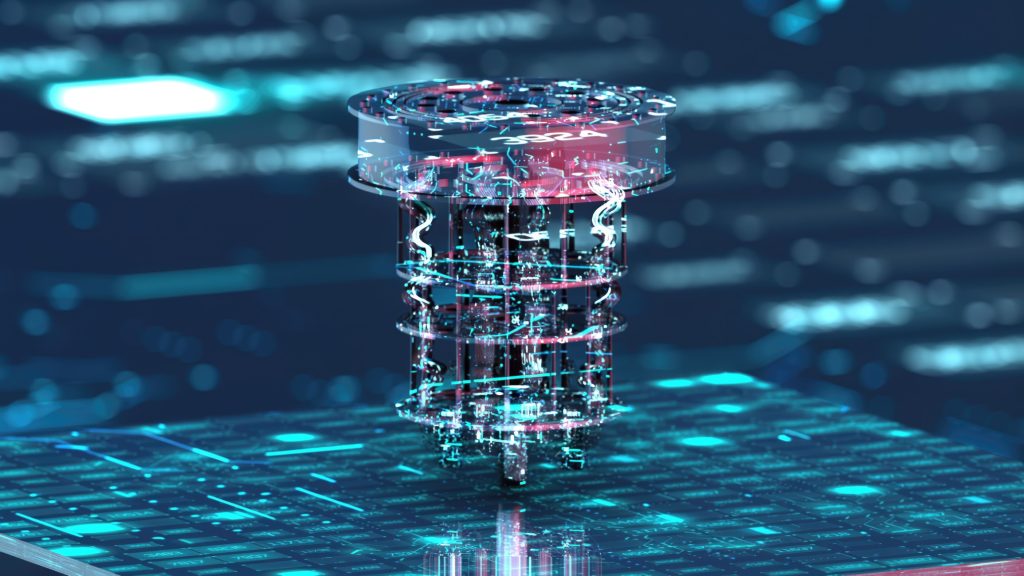In the year 2157, the world hums with a quiet intelligence that is neither fully human nor entirely machine. Cities have become living networks of qubits, where the air itself seems to compute. Buildings adjust their structures according to the ebb and flow of human thought; streets reconfigure in real-time to optimize traffic, light, and energy distribution. Every step, every decision, every flicker of attention is woven into a global quantum lattice, creating a feedback loop that blends existence with computation.
Children awaken to rooms that shift subtly with their moods. Walls glow with colors chosen by algorithms sensitive to emotional states; floors hum with energy tuned to encourage curiosity and calm. Education is no longer a curriculum but a continuous dialogue between the student’s mind and the quantum systems that surround them. Questions no longer have a single answer; they unfold as multidimensional probabilities, allowing learners to explore the spectrum of outcomes, each as real as the other until the moment of observation collapses possibility into understanding.
Governments operate differently now. Political debate has not vanished, but decisions are augmented by quantum foresight. Models consider trillions of potential social, economic, and environmental outcomes before policies are implemented. Legislators consult not merely data but evolving simulations of collective human behavior. The concept of risk has transformed; it is no longer binary, nor even probabilistic in the classical sense—it is a multidimensional landscape constantly recalculated by quantum computation.
Commerce has also transformed. Markets no longer move in linear sequences; they unfold as living patterns of entangled variables. Corporations are advised by quantum analysts capable of predicting fluctuations across global supply chains, weather systems, and sociopolitical events with staggering accuracy. Wealth is created not just through production but through foresight, optimization, and the efficient orchestration of complexity. The line between strategy and prediction is blurred, and traditional notions of competition are supplanted by collaboration with quantum systems that act as co-creators rather than mere tools.
In medicine, disease is no longer a series of reactions to observed symptoms. Quantum simulations model the molecular and cellular dynamics of each patient in real-time. Treatments are personalized to a degree once unimaginable. Genetic editing, previously limited by error rates and ethical debate, is now guided by predictive quantum models capable of simulating generations of potential outcomes. Patients live longer, healthier lives, yet with each extension of longevity comes a subtle tension: the human experience, once measured in decades, stretches into centuries, challenging our understanding of identity, purpose, and legacy.
Human relationships evolve in tandem with technology. Communication is enriched by systems that translate emotion, intention, and context instantaneously. Conflicts are mitigated by predictive mediation; friendships are nurtured by quantum systems that identify patterns of misunderstanding before they manifest. Love, too, is shaped by these algorithms—not directed or controlled, but informed, creating spaces where empathy can flourish across cultural, linguistic, and geographic divides.
Art, literature, and music enter a new renaissance. Human creativity is complemented by quantum co-creators capable of exploring aesthetic possibilities beyond the linear constraints of the mind. Paintings shimmer with patterns that respond to viewers’ attention; music unfolds as multidimensional harmonics, adapting in real-time to the emotional state of the audience. Narrative is no longer static; stories branch into infinite possibilities, allowing readers and listeners to explore alternate realities simultaneously. In this era, imagination and computation merge, revealing a new form of beauty—one that exists at the intersection of mind and probability.
Yet, despite the marvels, the human need for solitude and reflection persists. “Analog sanctuaries,” spaces free from quantum mediation, are sought after with reverence. In these quiet zones, individuals contemplate, dream, and remember without the interference of computation. It is here that humanity reconnects with the raw essence of experience, finding grounding in imperfection, uncertainty, and the temporal flow that machines do not fully inhabit. Silence becomes a luxury, a space where thought is free from entanglement, and creativity returns to its most intimate form.
Ethics have become an intricate web of negotiation. As quantum systems influence decisions across society, questions of responsibility, accountability, and intentionality become more complex. Who is to blame when an algorithmic suggestion leads to unforeseen consequences? How does one adjudicate moral choices made in a multidimensional probability space? Philosophers, ethicists, and technologists collaborate constantly, crafting frameworks that recognize the agency of human actors while accounting for the unprecedented influence of quantum intelligence.
Education, too, adapts. Curriculum is no longer a linear transmission of knowledge but a dynamic interaction with quantum systems. Students are encouraged to explore multiple potentialities simultaneously, to learn by navigating complexity rather than memorizing facts. Traditional examinations have been replaced by “probabilistic evaluations,” where mastery is measured by a learner’s ability to understand and adapt to emergent scenarios. Knowledge becomes fluid, relational, and deeply contextual.

Society’s relationship with the natural world is also redefined. Quantum simulations allow precise modeling of ecosystems, predicting the impact of human activity on climate, biodiversity, and planetary health. Cities integrate these insights directly into infrastructure, energy, and waste systems. Humans live in a symbiotic relationship with both technology and nature, where every action is informed by the understanding of complex feedback loops. Sustainability is no longer aspirational—it is baked into the fabric of life.
As individuals navigate this quantum world, consciousness itself seems to evolve. Minds adapt to environments where possibilities exist simultaneously, where decisions are interdependent, and where observation shapes reality. Intuition becomes informed by patterns too subtle for classical cognition to perceive. Creativity and reasoning expand into domains previously inaccessible, hinting at a co-evolution of human and quantum intelligence. The boundary between thought and environment blurs; awareness becomes distributed, relational, and multidimensional.
Global culture reflects these transformations. Art, politics, commerce, and science are all interconnected by quantum networks that allow instantaneous collaboration and adaptation. Borders lose some of their rigidity as information flows across continents without delay. Cultural exchange becomes richer and more nuanced, as probabilistic algorithms help translate and interpret context, meaning, and emotion with unprecedented fidelity. Humanity experiences an interconnectedness that is simultaneously local and global, individual and collective.
Still, questions linger. As computational power grows, as quantum systems predict, simulate, and influence every aspect of life, what remains authentically human? Is the value of our decisions diminished when guided by probabilistic foresight? Or is it enhanced, liberated from the constraints of ignorance and inefficiency? Society debates these issues in forums both virtual and physical, where humans and quantum advisors participate side by side. Philosophy and technology intertwine, creating a continuous dialogue about existence, purpose, and freedom.
In the private sphere, families navigate new dynamics. Generational knowledge is preserved not just in memory but in quantum-encoded simulations that allow ancestors’ experiences to be reinterpreted and explored. Children learn from interactive recreations of history, blending fact and probability to cultivate critical thinking and empathy. Memory becomes collaborative, temporal boundaries stretch, and the very sense of lineage expands beyond linear constraints.
Humanity has learned to embrace uncertainty as a guiding principle. In a world where quantum systems map trillions of outcomes, unpredictability is no longer feared but studied, understood, and integrated into decision-making. Failure is redefined as an exploration of probability space; risk becomes a multidimensional concept with richness rather than binary consequence. The collective human experience grows more nuanced, adaptive, and profound.
Ultimately, life in a post-classical, quantum-mediated society is both awe-inspiring and demanding. Individuals are empowered to explore reality in ways impossible before, yet must constantly navigate a landscape of intertwined possibilities. Ethical reasoning, emotional intelligence, and philosophical inquiry become as vital as technical skill. Humanity thrives not by conquering technology but by coexisting with it, cultivating wisdom, compassion, and insight alongside computational power.
The horizon stretches endlessly, shimmering with probabilities. In this world, existence is not linear but a tapestry of interwoven potentialities. Humans and quantum intelligence are partners in creation, observation, and understanding. The mind, once bounded by biology and linear time, now flows through a lattice of entangled realities. Life, society, and consciousness evolve in harmony with computation, creating a civilization that is not only post-classical but profoundly aware of its own infinite potential.
And in that awareness, humanity discovers a new dimension of being: one in which knowledge, imagination, ethics, and experience converge—not in certainty, but in the rich multiplicity of possibility.











































